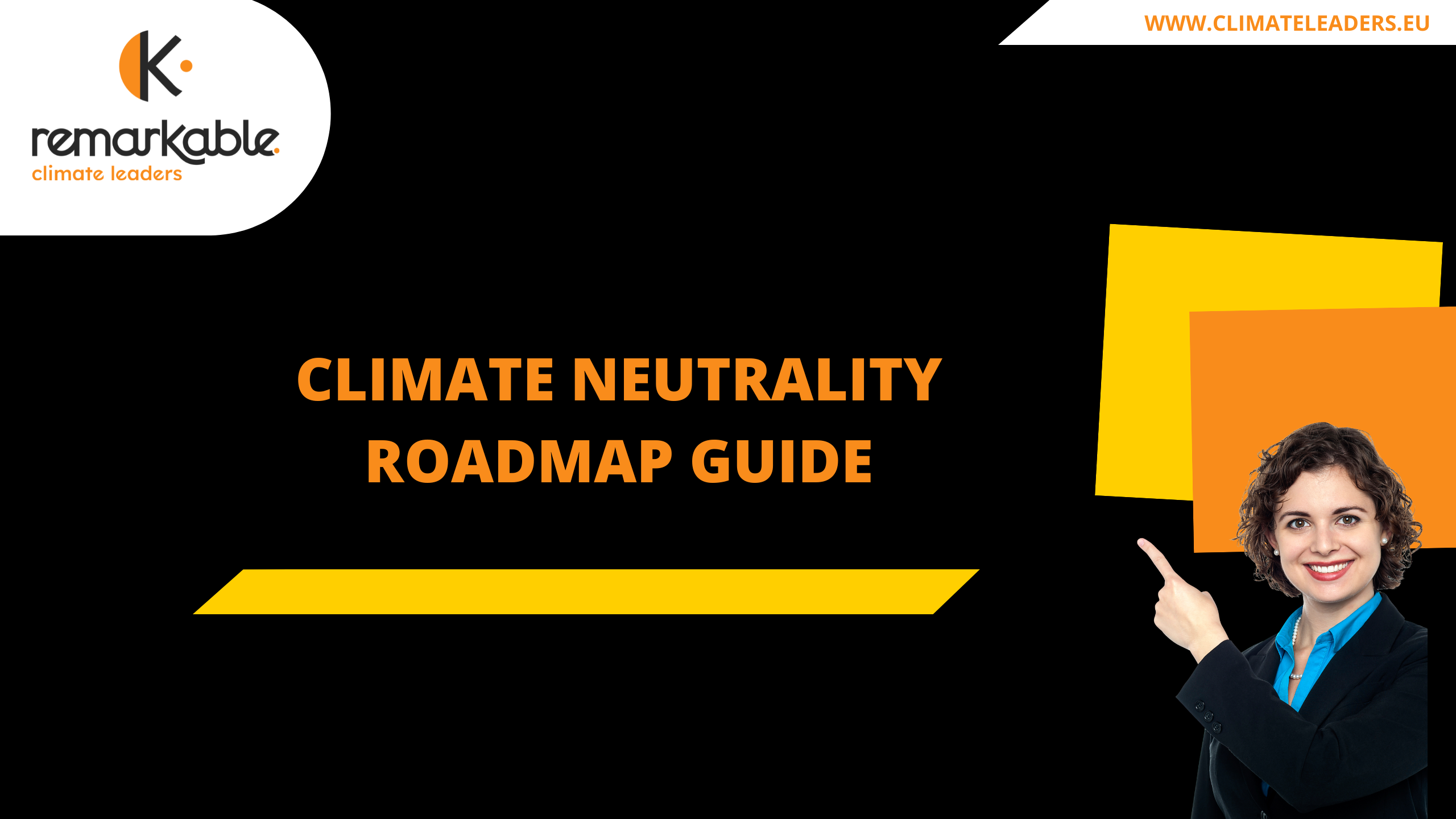Climate Neutrality Roadmap Guide
Creating a Climate Neutrality Roadmap (CNR) is a complex process that requires the involvement of various stakeholders and a thorough analysis of different sectors. Luckily, Climate Remarkables compiled a comprehensive guide for public authorities to help them with its development.

The development of a roadmap requires a comprehensive understanding of the status of the municipality. The helpful tools in this process are:
- an analysis of the impact of current policies and programmes on the municipality (e.g.
upcoming obligations, funding opportunities), including key barriers and opportunities; - assessing the current status of the energy transition (e.g. based on a SEAP/SECAP or
equivalent); - a stakeholder analysis resulting in a stakeholder map focusing, for example, on local politicians and administration, citizens, industry/SME, NGOs/civil society organisations, where applicable, academia/research;
- a SWOT analysis, tools and resources needed, and the definition of success factors.
REMARKABLE Climate Leaders created a Climate Neutrality Roadmap Guide to help local and regional authorities develop realistic and effective Roadmaps. The guide contains insights into where to access the needed information, exploiting the existing resources from international and EU initiatives, focusing mainly on the energy part of the Roadmap.
Climate Neutrality Roadmap Guide focuses on the following topics:
- Energy baseline
- Sector mapping
- Stakeholders mapping
- Swot analysis
- Vision
- Measures
Energy baseline
The first step in developing a CNR is to create an Energy Baseline chapter that explains the Baseline Emission Inventory (BEI). The BEI is a calculation of greenhouse gas emissions from various sectors, such as transportation, agriculture, and industry. While local and regional authorities can determine the scope of their BEI, a calculation for the three main sectors is given as an example:
• Building sector
o Public buildings
o Residential buildings
o Commercial buildings
• Mobility sector
o Public
o Private
o Commercial
• Public lighting
Sector mapping
The process of sector mapping should be done in parallel with the data collection for the BEI. It gives examples of what should be analyzed per sector. Sector mapping is essential for identifying the areas that need the most attention and investment.
Stakeholder mapping
The guide discusses stakeholder mapping, a process of deciding which stakeholders should be involved in the CNR development. The involvement of various stakeholders, including local communities, businesses, and civil society organizations is crucial for creating a realistic and successful CNR.
SWOT analysis
Based on the findings of the baseline review determine the strengths and weaknesses of your public authority in terms of climate neutrality management, as well as the opportunities and threats that could affect the Roadmap. The recommendation is to include identified stakeholders in developing the SWOT analysis. Use it as a guidance tool for the CNR development as it should refer to the identified sectors, stakeholders and actions.
Vision
Combining all the knowledge gained during the first stages of CNR development, the vision highlights key goals of how and why to achieve climate neutrality and by when. Developing an infographic for the vision might help the owners to perceive their vision better and help them to present the vision to others.
Measures
The measures must be realistic, meaning they should not be planned only in theory, but a concrete plan of how they should be implemented should be made and agreed upon with relevant stakeholders. For each action of the tangible measures, a short description must be given, containing information on how the action will be implemented. Targeted sectors should be specified together with the stakeholders. Finally, the expected results of the action and the due date should be presented. For the energy part of the CNR, the goals are mostly energy (MWh) and emissions (CO2) savings.

REMARKABLE Climate Leaders will build new leadership capacity across Europe through a Climate Leadership Programme designed with and for climate leaders. Through a people-centred approach, Regional Energy Agencies will support leaders of public authorities and communities in implementing transformational roadmaps and innovative solutions to achieve climate neutrality.